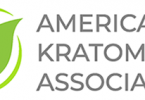Rebuttal to the DEA’s Notice of Intent to emergency schedule mitragynine and 7-hydroxymitragynine,
Scientific Rebuttal to DEA’s Notice of Intent to Emergency Schedule Kratom.v2.5.pdf

Herbal products of unknown origin and purity are sold regularly in the US. The
concentration of active constituents varies widely in all but a few products which test,
standardize and label these concentrations (Ekor, 2013).
Instances where an herbal product contains a plant other than that which is listed on the
label exist. If dealt with, it is done case-by-case, not thru absolute prohibition of the plant
that was supposed to be in the product (Ekor, 2013).
Deaths related to M. speciosa have only occurred with concomitant poly-substance use, pre-
existing health problems, or both (see rebuttal to “3-Factor Analysis” below). Evidence
suggests that the plant itself is not lethal in healthy adults.
II. Increases in calls to poison control centers indicate an increase in the use of M. speciosa.
Most of our society is unfamiliar with the effects of M. speciosa. Nausea, dizziness or
vomiting from excessive use will frighten the uninformed, resulting in calls to poison
control. Public education and familiarity with the plant’s effects will mean fewer calls to
poison control, as people learn that the effects of overconsumption will pass without issue.
Educating the public about potential drug-herb interactions, or cases where health issues
make consumption inappropriate will likewise mitigate risks to the public.
According to the CDC report, 75.2% of calls to poison control centers were made by
healthcare providers calling about a patient. Due to unfamiliarity with the plant and its
effects, healthcare provider calls to poison control are predictable, and not an indication of
an emerging threat to public welfare (Anwar, Law., & Schier, 2016).
III. Adulteration with synthetic cannabinoids or opiates.
The DEA source citing evidence of adulteration with cannabinoids states only that M.
speciosa was found in a clandestine lab where synthetic cannabinoids were applied to dried
raspberry or strawberry plant material, no mention is made of M. speciosa being adulterated
with synthetic cannabinoids (CDC/NIOSH, 2016)
One case of adulteration with a synthetic opiate has been published. This product was not
seen in the USA and was widely condemned by responsible vendors and consumers.
concentration of active constituents varies widely in all but a few products which test,
standardize and label these concentrations (Ekor, 2013).
Instances where an herbal product contains a plant other than that which is listed on the
label exist. If dealt with, it is done case-by-case, not thru absolute prohibition of the plant
that was supposed to be in the product (Ekor, 2013).
Deaths related to M. speciosa have only occurred with concomitant poly-substance use, pre-
existing health problems, or both (see rebuttal to “3-Factor Analysis” below). Evidence
suggests that the plant itself is not lethal in healthy adults.
II. Increases in calls to poison control centers indicate an increase in the use of M. speciosa.
Most of our society is unfamiliar with the effects of M. speciosa. Nausea, dizziness or
vomiting from excessive use will frighten the uninformed, resulting in calls to poison
control. Public education and familiarity with the plant’s effects will mean fewer calls to
poison control, as people learn that the effects of overconsumption will pass without issue.
Educating the public about potential drug-herb interactions, or cases where health issues
make consumption inappropriate will likewise mitigate risks to the public.
According to the CDC report, 75.2% of calls to poison control centers were made by
healthcare providers calling about a patient. Due to unfamiliarity with the plant and its
effects, healthcare provider calls to poison control are predictable, and not an indication of
an emerging threat to public welfare (Anwar, Law., & Schier, 2016).
III. Adulteration with synthetic cannabinoids or opiates.
The DEA source citing evidence of adulteration with cannabinoids states only that M.
speciosa was found in a clandestine lab where synthetic cannabinoids were applied to dried
raspberry or strawberry plant material, no mention is made of M. speciosa being adulterated
with synthetic cannabinoids (CDC/NIOSH, 2016)
One case of adulteration with a synthetic opiate has been published. This product was not
seen in the USA and was widely condemned by responsible vendors and consumers.
See above link for the full document.






